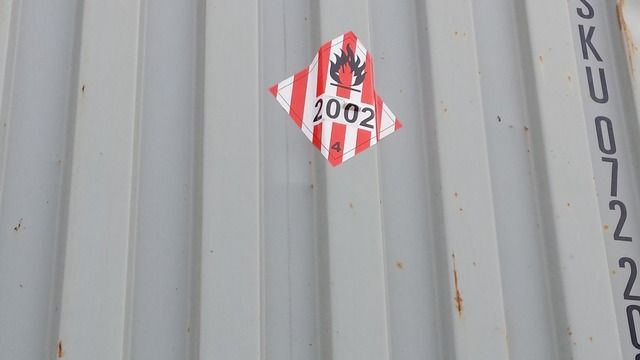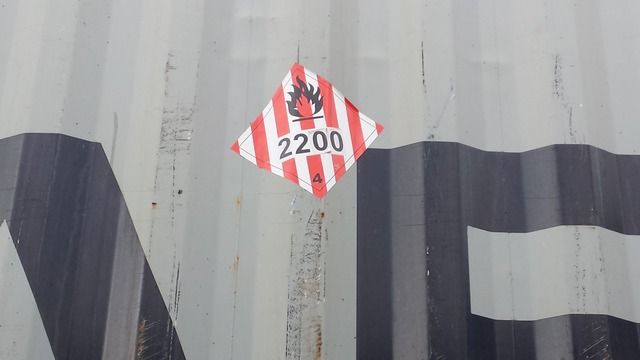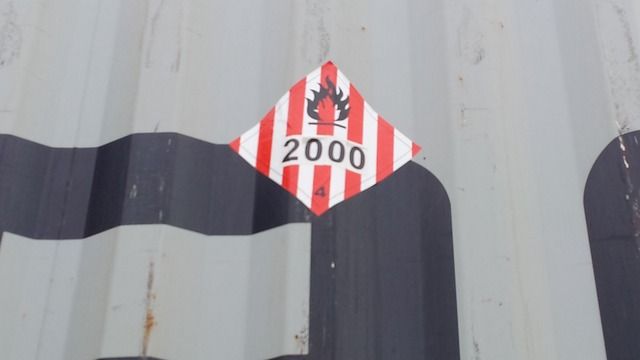TruckerJ:
Hi Dave.
I’ve tried to read as many posts as I can so hopefully you haven’t already answered this question. It’s more of a general question with exact examples. Simply put I would like to know where I can find out the required information so I can solve my problems.
I work for a consolidation centre dealing with restaurants. We deal with everything from food to kitchen equipment and cleaning products which is where my questions come in.
My understand was that anything with a dangerous goods sticker on it had to be transported with an ADR. As I’m learning this is not the case. I’ve now learnt there are 5(?) groups of dangerous goods. Exempt, limited, expected, ADR and something else. How do I know what I can take without possessing an ADR which I do not have. For example UN 1824 being a cleaning solution in 20l plastic contains says that the limited quantity is 1l and the excepted quantity is E2 with the table giving 30ml as inner packaging and 500ml as outer. You might as well be speaking Chinese to me. Then I also understand there is a 1000 point system. As I was transporting 40l of this stuff I got 40 points so I was under the 1000 points so I could take it without any additional rules.
We have also had to transport UN 1013 being carbon dioxide cylinders. About 10kgs each. So when I look up this information as above how do I know when I have reached my limit and need further training to transport such things. I hope I’ve not confused you too much in my rambeling!
Justin
Hi Justin,
First things first… Are you an employed driver?
If so, then this isn’t your problem because the responsibility for everything in your questions lies with the person sending the goods (= consignor) AND/OR the vehicle owner (= carrier.)
If your company is either (or maybe both) consignor/carrier, then they must appoint a properly qualified Dangerous Goods Safety Advisor (DGSA) which has been law in the UK since 01/01/2000.
Now to your questions…
First we need to get our English sorted as to definitions and meanings.
Hazardous goods have two current labelling systems:

Now we come to ‘dangerous’ goods.
The labelling system for dangerous goods uses square (UN Class) labels set at 45deg (diamond-shaped.)
There are 9 UN Classes.

The above UN Class 3 label also indicates flammability, but this one is for (proper) dangerous goods.
Dangerous goods may be packaged in several ways, depending on how the customer wishes to receive them.
‘Normal’ packages are drums, jerricans, boxes, crates, IBCs etc, which must be labelled using either of the systems above depending on whether the goods are dangerous or merely hazardous. Some packages may have both labelling systems, but us drivers are only concerned with the diamond-shaped UN Class labels which are used for transport.
When packaged dangerous goods bear UN Class labels, there are ‘freebie’ limits to what a non-ADR trained driver may carry.
The ‘freeby’ limit for any particular dangerous goods depends on the severity of danger and the limit is PER VEHICLE LOAD at any one time, regardless of individual consignment size.
For road transport (ADR,) there are five levels of danger (numbered 0-4,) which we call ‘Transport Categories’ (TCs.)
All dangerous goods (regardless of the UN Class number) belong in one of the five transport categories.
Each TC has a ‘freeby’ allowance.
TC 0 = No allowance, ALWAYS fully regulated.
TC 1 = 20Kg/L allowance.
TC 2 = 333Kg/L allowance.
TC 3 = 1,000Kg/L allowance.
TC 4 = No restriction.
The 1,000 point rule only applies when you need to carry dangerous goods in different TCs on board your vehicle at the same time, but still wish to stay sub-ADR limits.
When carrying up to (and including) the relevant limit, ADR doesn’t require a driver to have an ADR licence, but the driver must have had some form of documented ADR awareness training. However, there is no requirement for this to be carried on board the vehicle.
An ADR compliant 2Kg dry powder fire extinguisher is also required.
If the relevant ADR Transport Category ‘freeby’ limit is exceeded, then you’d need an ADR licence + orange plates and a whole load of other Regs would all apply at the same time.
Now we come to Limited Quantities.
SOME dangerous goods may be carried in Limited Quantities (LQs.)
The first thing to realise about LQs is that they are NOT packaged as above, so those limits and conditions I mentioned above DO NOT apply to dangerous goods packaged in LQs. The best way to describe this idea (without being too complicated) is to say that they are packaged as for retail sale over-the-counter to the public in a retail shop.
LQs are a form of exemption from ADR, but that doesn’t mean that all bets are off because you still need to comply with the conditions attaching to the exemption. (Once you’ve achieved that, THEN you’re exempt from the rest of ADR.)
LQs may only be packaged as receptacles in boxes OR on small stretch-wrapped trays.
Different dangerous goods carried as LQs have differing inner receptacle size limits.
Max box weight in all cases = 30 Kg
Max tray weight in all cases = 20Kg
LQ label

ADR doesn’t require a driver to have an ADR licence regardless of the quantity of LQs to be carried, but the driver must have had some form of documented ADR awareness training. However, there is no requirement for this to be carried on board the vehicle.
A vehicle that has a permitted GVW >12t needs a large version of the LQ label (250mm X 250mm and called a placard) to be displayed on the front and rear when carrying >8t of LQs. The driver DOES NOT need an ADR licence, regardless of quantity of LQs carried.
Next is Excepted Quantities (EQs.)
EQs are best thought of as very tiny amounts, such as very small samples.
The biggest of these is 30g (just over an ounce in old money!) so, from your description, I wouldn’t imagine that you carry EQs, but I could be wrong about that.
EQs have a 1,000 PACKAGES limit that cannot be exceeded in any circumstances.
EQ label

The above are all some form of exemption, but here’s the good bit… the exemptions do not compete with each other, so you can have a bit of a mix-and-match as long as all requirements are met.
I hope I’ve clarified some of your wonderings. 
















